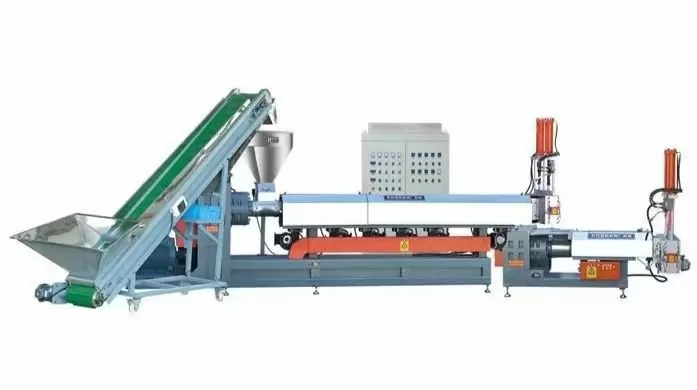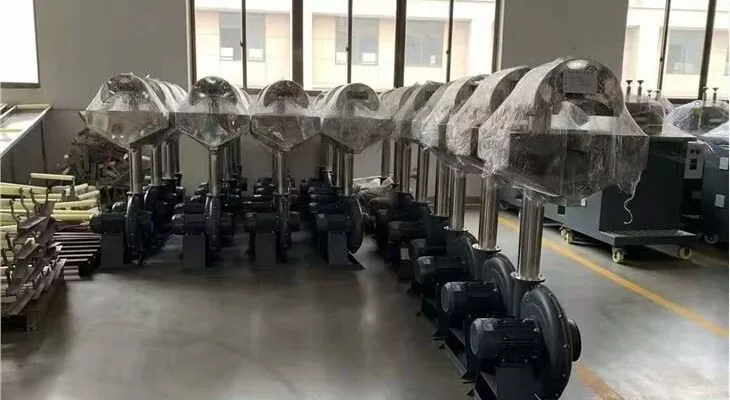I hit a wall the first time I tried to scale up our granulation line. Our shredded plastic feedstock clumped. Production slowed. Costs soared. I felt the pressure. My team was swamped. We needed a clear roadmap. Without one, we faced quality issues, bottlenecks, and angry customers.
In a nutshell, plastic granulation transforms shredded plastic into uniform pellets by feeding cleaned, dried, and melted resin through an extruder, cutting it into granules, cooling them, and then sieving to ensure consistent size—all while optimizing throughput, energy consumption, and pellet quality for downstream processing.
I promise this journey is smoother than it sounds. Stick with me. I’ll break it down.

I remember my first extruder like it was yesterday. It barked, vibrated, and threatened to overheat. Yet it held the key to uniform pellets.
We studied every variable. Temperature. Screw speed. Die design. Each tweak shifted our output. It felt like alchemy.
What Are the Main Stages of Plastic Granulation?
Granulation has four core stages: feeding, melting & homogenizing, cutting, and cooling & screening. Each is vital. Skip one, and your pellets misbehave.
Feeding & Pre-conditioning: Shredded flakes enter the hopper. Moisture is checked. Contaminants are removed. We aim for dry, uniform feedstock. Research shows moisture reduction boosts granulation efficiency by up to 15%.
Melting & Homogenizing: The twin-screw extruder heats and mixes. Temperature zones are calibrated. I tune barrel zones to match resin flow curves.
After melting, the molten plastic reaches the die. It emerges as strands. Then we chop.
Cutting: Rotary knives slice strands into pellets. Knife speed and die gap control pellet size.
Cooling & Screening: Pellets drop into a water bath or air cooler. Screens shake off fines. We monitor pellet quality constantly.

Why Is Temperature Control Crucial?
Heat is your friend—and foe—in granulation. Consistent melt avoids burns and degradation. Hot spots create gels. Cold spots cause unmelted flakes.
I map barrel temperatures with thermocouples. Each zone has its own PID controller. We log data in real time. That logging reveals trends. You’d be surprised how a 5°C drift affects pellet quality.
Do We Prepare the Feedstock?
Clean feedstock is the backbone of granulation. I reject wet or dusty flakes. We wash with caustic solutions. Then we dry with a desiccant dryer. Our moisture meters never rest.
Sizing also matters. Large flakes can jam the extruder. We use a vibrating screen to ensure under 10 mm particle size.
What Equipment Do We Use?
Choosing the right extruder is half the battle. Twin-screw vs. single-screw. I favor twin-screw for its mixing prowess.

Our lineup includes:
Twin-screw extruders with modular barrels.
Strand pelletizers with water rings.
Hot-face cutters for precise pellet geometry.
We track equipment uptime closely. Downtime kills throughput.
How Do We Optimize Pellet Quality?
Pellet quality depends on size uniformity, surface finish, and absence of contaminants. We use inline optical sensors. They measure pellet dimensions on the fly.
Adjusting cutter speed by just 2% tightened our size distribution curve by 10%. That jump improved downstream molding yield.
What Are the Energy Considerations?
Granulation isn’t cheap power-wise. Extruders can draw hundreds of kilowatts. I benchmark energy consumption per kilogram of pellets.
We installed variable-frequency drives (VFDs) on feed screws. That cut idle power by 20%. A small tweak, big savings.

What Safety Measures Must We Follow?
Granulation lines have pinch points, hot surfaces, and high pressures. My priority: zero accidents.
We installed safety doors with interlocks. Emergency stops are everywhere. Lockout-tagout procedures get drilled weekly. We log every near-miss. That data feeds our monthly safety review.
How Do We Troubleshoot Common Issues?
Pellet discoloration? Likely due to thermal degradation. We lower the melt temperature by 5 °C.
Clumping in the cooler? Check water flow rate. Bumps in throughput? Inspect the hopper feed.
My team uses a troubleshooting checklist. It cuts downtime by 30%.
What Are the Future Trends in Granulation?
Industry 4.0 is here. We’re adding IoT sensors. Data streams will predict maintenance needs. AI-driven control loops are on our roadmap.
Sustainability matters. We’re testing bio-additives to enhance pellet biodegradability without sacrificing strength.
Conclusion
Plastic granulation is a dance of heat, pressure, and precision. Master each step. Monitor relentlessly. Innovate boldly. That’s how we at Amige turn shredded plastic into perfect pellets.
